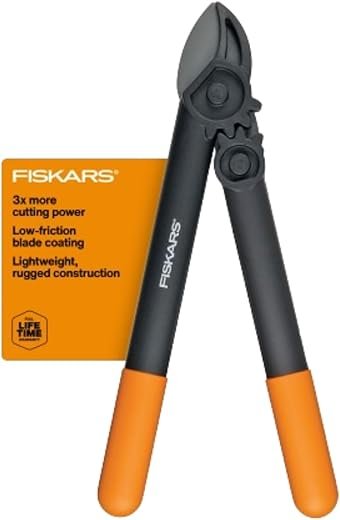In the world of gardening, mastering the use of pruning saws can revolutionize your landscaping game, allowing for cleaner cuts and healthier plants. This step-by-step guide lays out effective techniques for wielding these powerful tools, ensuring you can tackle branches with precision and confidence. Did you know that improper pruning can lead to a staggering 25% reduction in a plant’s growth potential? By following the guidelines in this guide, you’ll not only improve your pruning skills but also contribute to the vitality of your garden, turning your green space into a thriving oasis.
Select the Right Pruning Saw
Choose a pruning saw that suits your needs based on the size and type of branches you will be cutting. Evaluate the following factors:
- Blade Length: Select a blade length that matches the diameter of branches you typically prune. For smaller branches (up to 1 inch), a shorter blade (7-10 inches) is sufficient. For larger branches (1-4 inches), opt for a longer blade (10-15 inches) for better leverage and cutting power.
- Tooth Configuration: Assess the tooth design of the saw. Look for a saw with fewer, larger teeth for cutting thicker wood quickly, while a saw with more, finer teeth is better suited for smaller branches or detailed work.
- Handle Design: Test the handle for comfort and grip. Choose a design that allows for a secure hold and minimizes hand fatigue. Ergonomic or padded handles can increase comfort during prolonged use.
Consider the weight and balance of the saw. Hold the saw in your hands and check for a comfortable weight that allows you to maneuver easily. Examine the saw’s construction material; lightweight materials like aluminum or composite can enhance usability. Ensure that the saw is well-constructed with durable materials to withstand regular use. Look for features such as foldable blades for easy storage or safety mechanisms to prevent accidental injuries.
Prepare Your Workspace
Ensure your workspace is free from any obstacles. Remove any clutter, such as tools, garden furniture, or debris, that could impede your movement while pruning. This not only enhances your efficiency but also minimizes the risk of accidents. Create a designated area for your pruning materials, such as bags for clippings or containers for tools. Keep a clear path to your plants and ensure that you have ample room to maneuver around them. Consider marking off this area with cones or flags if pruning in a larger space, so others are aware of the designated work zone.
Wear appropriate safety gear to protect yourself from potential hazards. Equip yourself with gloves to shield your hands from sharp thorns and rough edges. Opt for heavy-duty gardening gloves for extra protection. Use goggles to safeguard your eyes from flying debris and dust that can occur during pruning. If you’re working with power tools, consider wearing hearing protection as well. Here’s a checklist of essential safety gear:
- Heavy-duty gardening gloves
- Safety goggles
- Hearing protection (if using power tools)
- Long sleeves and pants to protect your skin
By taking these precautions, you ensure a safer and more enjoyable pruning experience.
Identify What to Prune
Assess the plants by inspecting each branch closely. Look for any dead, damaged, or diseased branches that need immediate attention. Dead branches will often appear brittle and lack any signs of life, while damaged branches may have cracks or fractures. Identify diseased branches by checking for discoloration, unusual growths, or signs of decay. Mark these areas for pruning, as removing them will help prevent the spread of disease and improve the overall health of the plant.
Evaluate the plant’s structure to identify overcrowded areas. Look for branches that are crossing over one another or growing too closely together, which can hinder air circulation and light penetration. Prune these overcrowded branches to create a more open structure, allowing for better airflow and sunlight to reach the inner parts of the plant. This not only promotes healthy growth but also enhances the plant’s aesthetic appeal.
Use Proper Cutting Techniques
When using the pruning saw, ensure you make smooth, consistent cuts. Start by creating a notch cut on the underside of the branch. This initial cut should be about one-third of the way through the branch, which will help prevent tearing as you complete the cut. Follow through with a clean cut from the top of the branch, aligning your saw blade with your initial notch. Maintain a steady grip on the saw and keep the angle consistent throughout the cutting process. This will give you optimal control and ensure that the branch is cut down cleanly without any jagged edges.
- Maintain a firm grip on the saw handle with both hands.
- Position your body to avoid strain, keeping your back straight and legs shoulder-width apart.
- Angle the saw at approximately 45 degrees to the branch for better efficiency.
- For example, when pruning a tree branch that is 2 inches in diameter, perform the notch cut first, then finish with the top cut, ensuring a smooth finish.
- After cutting, inspect the area to make sure no bark is torn and the cut is clean, which will promote quicker healing for the tree.
Mastering Your Pruning Technique
In conclusion, effectively using pruning saws can enhance your gardening experience and promote healthier plant growth. By choosing the appropriate saw, preparing properly, knowing what to prune, applying the correct techniques, and ensuring regular maintenance, you can maximize the benefits of this essential tool. With these practices in mind, you’ll be well-equipped to tackle your gardening tasks with confidence and efficiency.
Explore products related to Pruning Saws on Ninjagardentools.com.

